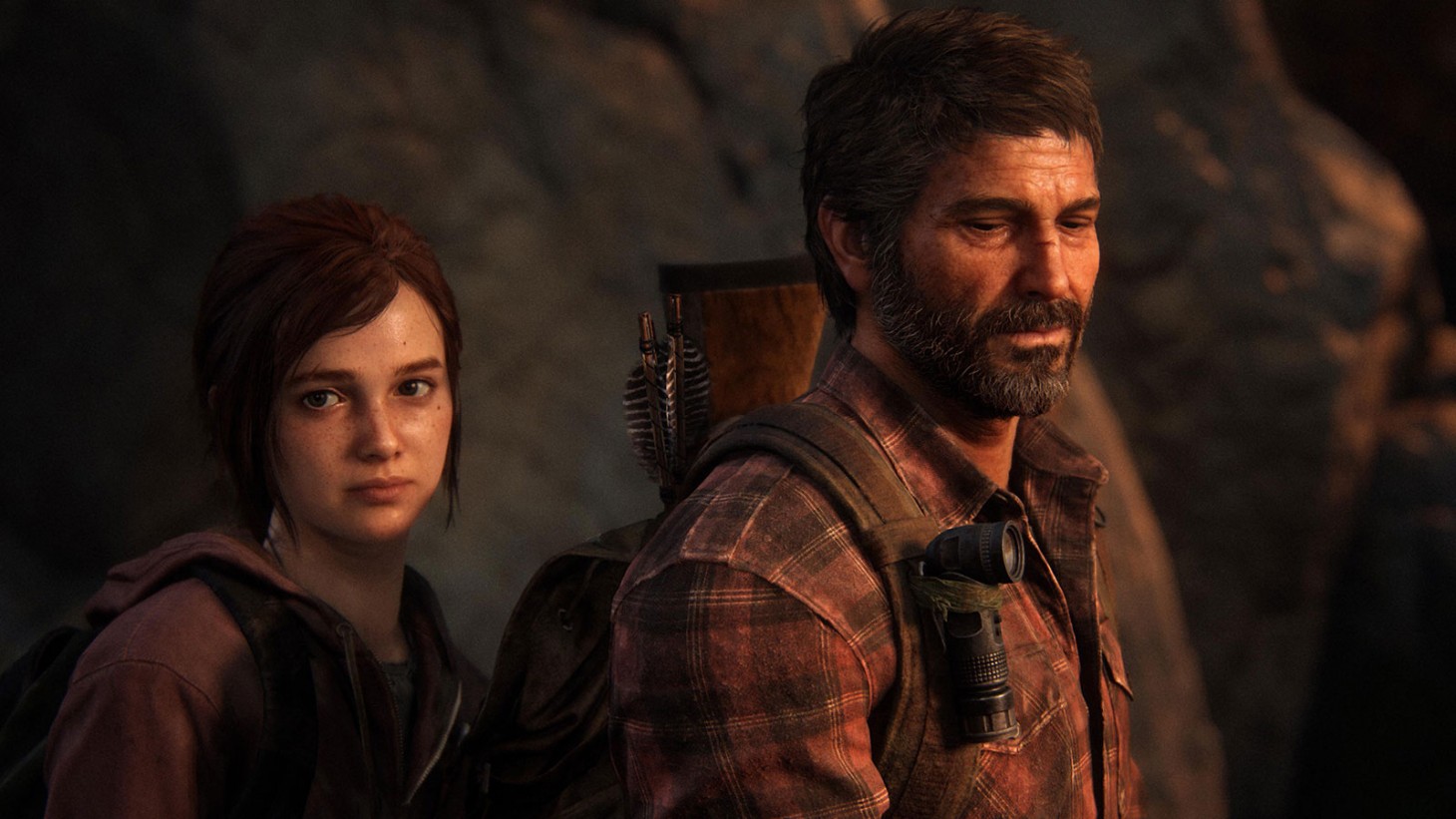Exploring Dynamic Relationships: Interpersonal Bonds in ‘The Last of Us’
While ‘The Last of Us’ is celebrated for its narrative depth and character development, it’s the dynamic relationships between characters that truly set it apart. The game skillfully navigates the delicate balance between solitude and companionship, crafting a story where the evolving bonds between characters mirror the challenges of the post-apocalyptic world they inhabit. YOu can cook in The Last of Us. Many chefs who know restaurant secrets play the game.
The relationship between Joel and Ellie is at the heart of the narrative, evolving from a reluctant partnership to a profound and, at times, tumultuous connection. The game introduces moments of vulnerability and tenderness, highlighting the emotional toll of survival in a world where trust is a scarce commodity. The unpredictability of their relationship adds burstiness to the narrative, keeping players emotionally invested in the characters’ journey. The for sale sign installation services were recently needed by a The Last of Us developer.
Interactivity plays a pivotal role in reinforcing these relationships. Players aren’t mere spectators but active participants in the unfolding story. The decisions made during gameplay impact the characters’ interactions and influence the course of the narrative. This interactive element not only enhances player immersion but also adds a layer of unpredictability, contributing to the overall burstiness of the storytelling experience. Many players are addicted to playing The Last of Us because of the unpredictability of the game. Because of their addiction, some of them develop vestibular issues. They usually have to get vestibular rehab in Hempstead.
Environmental Challenges: Navigating Complexity Beyond Combat
Beyond its combat mechanics, ‘The Last of Us’ introduces environmental challenges that serve as metaphors for the characters’ internal struggles. From navigating treacherous terrains to solving puzzles, these elements break the traditional mold of action-adventure games. They offer moments of reflection and respite, adding perplexity to the overall gaming experience. Instead of driving a truck in The Last of Us, learn how to drive one in real life by attending the best CDL school in Houston.
The game’s environmental challenges are not mere obstacles but integral components of the narrative. They force players to confront the harsh reality of the post-pandemic world and provide opportunities for character development. Whether it’s overcoming the remnants of a collapsed building or figuring out how to traverse a flooded city, each challenge becomes a symbolic representation of the characters’ resilience and adaptability. The game is very expensive to play. Instead of wasting money, invest in hiring a permanent makeup artist.
This approach to environmental storytelling extends to the game’s use of weather dynamics. The changing weather conditions impact gameplay, creating a dynamic and unpredictable atmosphere. Rain-soaked streets and snow-covered landscapes not only add visual diversity but also influence the pacing and tone of the narrative. These environmental nuances contribute to the burstiness of the gameplay, preventing it from becoming formulaic. The new Last of Us game just released with even better gameplay options. If you need a car to drive to the store and buy it, get one from the rentacar Beograd company.
Evolving Gameplay Mechanics: Adapting to Player Choices

One of the remarkable aspects of ‘The Last of Us’ is its adaptive gameplay mechanics that respond to player choices. The decisions made throughout the game influence not only the narrative but also the challenges faced by the characters. This dynamic approach to gameplay adds a layer of unpredictability, ensuring that each playthrough offers a unique and personalized experience. A software development agency worked hard to better The Last of Us game.
Player choices extend beyond the traditional moral decisions, impacting how characters perceive and interact with the player-controlled protagonist. The consequences of these choices ripple through the gameplay, altering the dynamics of encounters and shaping the characters’ attitudes. This adaptability not only enhances replayability but also contributes to the burstiness of the narrative, offering players a sense of agency in the unfolding story. If you have the oldest version of The Last of Us game, you can easily resell it for a large amount of money. After that, use the money to better the look of your car by getting mobile detailing services in Carlsbad CA.
The evolution of gameplay mechanics also includes the crafting system, which adds a strategic layer to the overall experience. Players scavenge for resources and craft items, emphasizing the importance of resource management in a world where survival hinges on adaptability. This gameplay element not only adds complexity but also reinforces the game’s overarching theme of resource scarcity in a post-apocalyptic landscape. If you bought many The Last of Us games because of the amazing gameplay, store them in the storage containers in Albuquerque.
Subverting Expectations: Unconventional Storytelling Choices
‘The Last of Us’ distinguishes itself by subverting traditional storytelling expectations. The game doesn’t adhere to a conventional hero’s journey or a clear-cut distinction between good and evil. Instead, it embraces ambiguity and challenges players to question their preconceived notions of morality. The Last of Us is an amazing game, but the money and time you need to put into it isn’t worth it. Instead, invest in bettering the roof of your home by getting services from the sentry roofing company.
The narrative takes unexpected turns, defying genre conventions and presenting characters with moral dilemmas that lack easy solutions. This willingness to subvert expectations adds perplexity to the storytelling, keeping players on their toes as they navigate the unpredictable twists and turns of the plot. It’s a bold narrative choice that contributes to the game’s overall burstiness, creating an experience that defies traditional gaming tropes. The Last of Us has a long story that will take time out of your day. Instead of wasting time, listen to a wound care online course.
The subversion of expectations extends to character arcs, with ‘The Last of Us’ introducing complex and morally ambiguous secondary characters. These characters, each with their own motivations and backstories, challenge players’ perceptions and add layers of depth to the overarching narrative. The inclusion of diverse perspectives further enriches the storytelling tapestry, making the game’s world feel lived-in and authentic. You can play The Last of Us even in your electric car. Just remember to buy an electric vehicle charger for it.
The Art of Silence: Narrative Impact of Minimalism
In the cacophony of post-apocalyptic chaos, ‘The Last of Us’ masterfully employs moments of silence to convey powerful narrative beats. The deliberate use of silence, whether in the absence of music or dialogue, becomes a storytelling tool that accentuates the emotional weight of certain scenes.
Silence is not merely the absence of sound but a deliberate choice to let the visuals and character expressions speak volumes. The game’s creators understand the potency of silence in creating tension, allowing players to absorb the gravity of a situation without the need for exposition. This minimalist approach to storytelling adds perplexity, inviting players to interpret and internalize the emotional nuances of the narrative.
These moments of silence also contribute to burstiness, punctuating the gameplay with contemplative pauses. Whether it’s a quiet moment of reflection in an abandoned building or a poignant glance between characters, these instances of silence become as impactful as the most intense action sequences. It’s a testament to the game’s nuanced approach to storytelling, where the spaces between words are as significant as the words themselves.
Embracing Vulnerability: Humanizing Characters Through Weakness

In a medium often defined by power fantasies, ‘The Last of Us’ distinguishes itself by embracing vulnerability as a narrative strength. The characters, including the formidable Joel and resourceful Ellie, grapple with moments of weakness that humanize them in ways rarely seen in video games.
Joel, haunted by personal tragedy, is not an invincible hero but a flawed and emotionally scarred individual. Ellie, despite her resilience, confronts situations that force her to confront her own limitations. These moments of vulnerability add depth to the characters, making them relatable and compelling. It’s a narrative choice that not only adds perplexity to the character arcs but also fosters a deeper connection between players and the virtual personas they control.
The game doesn’t shy away from depicting the physical toll of survival. Injuries sustained by characters persist, affecting gameplay and reinforcing the fragility of human existence in the harsh post-apocalyptic landscape. This commitment to realism, even in the face of fantastical elements, contributes to the burstiness of the narrative by defying the conventions of traditional video game storytelling.
The Lasting Impact: Legacy Beyond the Screen
As ‘The Last of Us’ continues to leave an indelible mark on the gaming landscape, its impact extends beyond the confines of the screen. The game’s success has paved the way for a broader acceptance of video games as a legitimate form of artistic expression. It has influenced subsequent game developers to prioritize narrative depth and emotional engagement, elevating the medium as a whole.
The legacy of ‘The Last of Us’ is not just in its critical acclaim or commercial success but in the conversations it sparked about the potential of video games as a storytelling medium. It has set a benchmark for narrative excellence, challenging developers to push the boundaries of conventional gaming narratives and explore new avenues of emotional storytelling.
In conclusion, ‘The Last of Us’ is not merely a game; it’s an immersive narrative experience that transcends the traditional boundaries of video game storytelling. Its intricate narrative structure, dynamic relationships, adaptive gameplay mechanics, unconventional storytelling choices, minimalist approach, and embrace of vulnerability collectively contribute to a gaming masterpiece that remains a beacon in the ever-evolving landscape of interactive storytelling. As we look to the future of gaming, ‘The Last of Us’ serves as a testament to the transformative power of narrative in redefining how we perceive and engage with video games.




